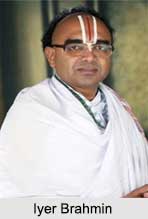 Jaina-faith did not ever get in any region of India such a great significance as in Gujarat. It is said that the 22nd Tirthankara, Aristanemi exerted his influence here, that he obtained Nirvana here and that many pious men got their salvation here on the holy mountains of Girnar and Satrunjaya. The important position which Gujarat enjoyed early among Swetambaras could be clearly explained by the fact that the council met there in a place called Valabhi in the year 980 (993) after Mahavira`s Nirvana. The "white-dressed creed" gave the final from to its holy scriptures in the council.
Jaina-faith did not ever get in any region of India such a great significance as in Gujarat. It is said that the 22nd Tirthankara, Aristanemi exerted his influence here, that he obtained Nirvana here and that many pious men got their salvation here on the holy mountains of Girnar and Satrunjaya. The important position which Gujarat enjoyed early among Swetambaras could be clearly explained by the fact that the council met there in a place called Valabhi in the year 980 (993) after Mahavira`s Nirvana. The "white-dressed creed" gave the final from to its holy scriptures in the council.
Rulers and those in power from various aristocratic Houses acted in Gujarat as the patrons of Jainism. King Vanaraja (circa 720-780) from Chavada dynasty is said to
have been brought up by the Jaina monk Silaguna Suriin a forest before he became a king and, therefore, kept up also later his contact with the religion of the Tirthankaras. When he founded the city of Anahilvada Pattana, he got it dedicated according to the Jaina Mantras and embellished it with a temple in which he was himself represented as a worshipper of Parshvanatha.
Jainism had great patrons, above all, among a few kings from the Chalukya-dynasty (Solariki). Its founder Mularaja, although he was a Shaivaite had built a Jaina temple. The pious layman Vimala built in the year 1032 the famous Jaina temples on the splendid peak of Mount Abu during the reign of King Bhima (1022-1064). These temples have brought glory to Abu by their name Vimala-vasahi.
Jaina-faith in Gujarat experienced a boom in the following period, mainly due to the activity of the famous Hemachandra, the most significant writer brought to the fore by Swetambaras. Hemachandra was born in the year 1088 or 1089 in Dhandhuka in Gujarat as a son of a Jaina-businessman. Monk Devachandra who took notice of the intelligent boy, requested his parents that he should be allowed to take up his education; he initiated him in holy orders at his age of eight. At this time, he gave him the name Somachandra. Educated in all the branches of Jainism, the youth acquired significant knowledge on account of his extraordinary talent; he even made the Brahmanic learnedness completely his own. At his age of 21, he was ordained under the name Hemachandra as an Acharya (master) and successor to his teacher. His knowledge and his ready wit in conversation won him the friendship of King Jayasirhha Siddharaja (1094-1143) from the Chalukya-dynasty. This prominent ruler, who became famous on account of his campaigns and buildings, was an enthusiastic friend of literature and philosophy. Although he himself was a believing Shiva-worshipper, he attracted 1 million monks to his palace in Anahilvada-Pattana.
When Jaysimaha died in 1143, his grand nephew Kumarapala succeeded him to the throne of Gujarat. Hemachandra got an important position also in his regime. Kumarapala then gave up enjoyment of meat and hunting and forbade in his empire slaughtering of animals, eating of meat and enjoyment of alcoholic drink and gambling. These measures, transforming Gujarat into a Jaina-Model-State, were carried out most strictly. The butchers had to give up their occupation for which they were compensated by an amount which was equal to their three year`s income; the Brahmanas had to the animal sacrifice by offerings of corns. Hemachandra appears to have understood in the cleverest manner to keep the ruler true to his vow, even then when it clashed with the inherited kingly duties.
Kumarapala visited many holy places of Jainas and embellished them with buildings; it is said that he got 32 temples erected as atonement for enjoyment of meat in which his 32 teeth had indulged before he was converted to Jainism.
Ajayapala, the nephew of Kumarapala had succeeded Kumarapala in the state of Gujarat. It is said that he was a fanatic follower of Shaivism and during his regime the Jains were persecuted in the state.
Jainism experienced a great bloom under the Vaghelas who had come to power in the place of the Chalukyas in Gujarat at the beginning of the 13th century.




















